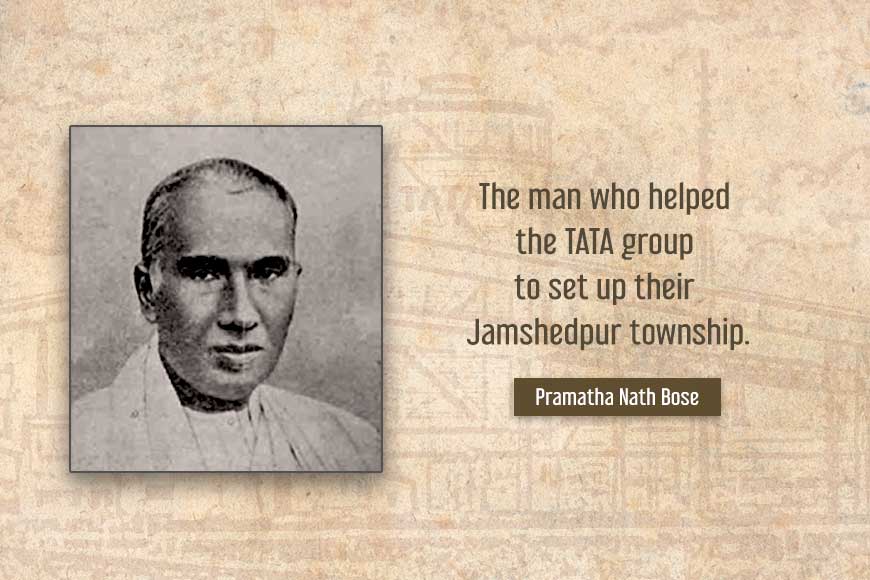P.N. Bose was first Indian geologist who found India’s vast iron-ore deposits - GetBengal story

It is most unlikely that people are familiar about a place in Bengal called Gobordanga. It is also unlikely that anyone ever heard of P.N. Bose, the man who pioneered India’s mineral excavations and helped the TATA group to set up their Jamshedpur township. But in this small, non-descript village of 24 Parganas was born a pioneer geologist in the late 19th-century, whose colossal achievements helped in shaping the Indian economy of today.
Pramatha Nath Bose aka P.N. Bose was born on May 12, 1855. Since childhood, Bose was an exceptionally bright student. In fact, when he was 15, he was overqualified to appear for the entrance examination. In his spare time, he wrote poems which were later published and highly commended. Bose joined Krishnagar College but got transferred to St Xavier’s College (University of Calcutta) in his third year. In 1874, he graduated from St Xavier’s College. While in college, he came to know about the Gilchrist Scholarship that would enable him to study abroad. He took the test and came out with flying colours and travelled to England to earn an undergraduate degree in science. Bose was in fact, the first Indian to get a BSc degree from Cambridge University. The science curriculum included Chemistry, Biology, Geology, Physical Geography and Mental Philosophy. While in England, he met Rabindranath Tagore and the two became very good friends. In 1877, he went on to attend the Royal School of Mines in London from where he graduated with maximum marks in biology and palaeontology.
After this, Bose could have stayed back in the UK and made a life for himself in England, but he was a nationalist to the core who was keen on working for the upliftment of his motherland. While in England, he realized that industrial regeneration was the only way that India could take to advance economically. So he decided to return to India.
Bose applied for a government job under the Secretary of State, for both the Indian Education department and the Geographical Survey of India. However, his application was rejected on both counts, and he was forced to stay in England. While there, he started delivering lectures at various educational institutions to tide through the financial crunch. Bose was undeterred by these impediments and chose to became the secretary of the England-based India Society, a socio-political body that was fighting for justice in India. Although the society was short-lived, eminent personalities like Dadabhai Naoroji and Ananda Mohan Bose, were its members.
Meanwhile, Bose participated in political meetings and often criticized the British. This enraged the higher officials in London who decided to get rid of him by giving him the job he had applied for. He was given a chance to work under the Secretary of State of Indian Education, but chose to work for Geographical Survey of India (GSI), as his instincts were better suited for that field. He returned to India in 1880 and joined the GSI as its Assistant Super. This was the beginning of a long and illustrious career for him.
From 1880 to 1887, Bose spent six months on the field in Madhya Pradesh and would spend the next six months writing extensive reports about his findings, in his Calcutta office. In this span of time, he came across the regions of Dhuli and Rajhara in Madhya Pradesh which had an abundance of iron ore deposits and were completely untouched. In 1890, he was sanctioned by the Bengal government to explore the districts of Darjeeling, a region known for its impenetrability due to its hills and forests. However, Bose’s expedition was successful, and he found ravines of coal.
Bose’s most promising discovery came when he retired from GSI in 1903 and was approached by Mohini Mohan Dhar, the Dewan of Mayurbhanj district in Odisha. The Dewan knew well of Bose’s capabilities and promised to fund his endeavour if he wanted to engage in the geographical survey of the state. Bose undertook the responsibility of surveying the state which had no previous survey records and set to work in the winter of 1903.
Along the slopes of Gurumahisani hills, Bose found unusually rich iron-ore deposits. In fact, Bose noted this in his survey—
“It is tough to make even an approximate estimate of the quantity of available iron ores. But it would probably be no exaggeration to say that a practically inexhaustible supply for several furnaces on a modern scale may be safely depended upon.”
His discovery soon reached all the corners of the world, and newspapers like ‘The Statesman’ and ‘The Englishman’ reported his work, and The Mining Journal Of London even appraised his findings. Realizing that this was the industrialization break India needed, Bose was quick to act. He wrote a letter to Jamshedji Tata’s sons urging them to leave the deposits in Dhuli and Rajhara in Madhya Pradesh, as they were miniscule compared to the one in Odisha.
Following this, the Tata group set out to establish his findings, and Bose’s prediction was right. Even today, Odisha is the largest producer of iron ore in the country
Bose went on to lead the industrial revolution in India by advocating for science and technology. He also set up the National Bengal Institute to deliver quality education to people. Besides paving the way for industrial development in India, PN Bose also has numerous other achievements to his credit. Not only was he the first Indian graduate in science from a British University he was the first to discover petroleum in Assam, first to set up a soap factory in India and also the first to introduce micro sections as an aid to petrological work.
He was also the first Indian to hold a graded position in the Geological Survey of India where he served with distinction. Bose passed away in 1934 at the age of 79. This man of science has left behind a rich legacy and will go down in the annals of history as the geologist who discovered steel for India.











